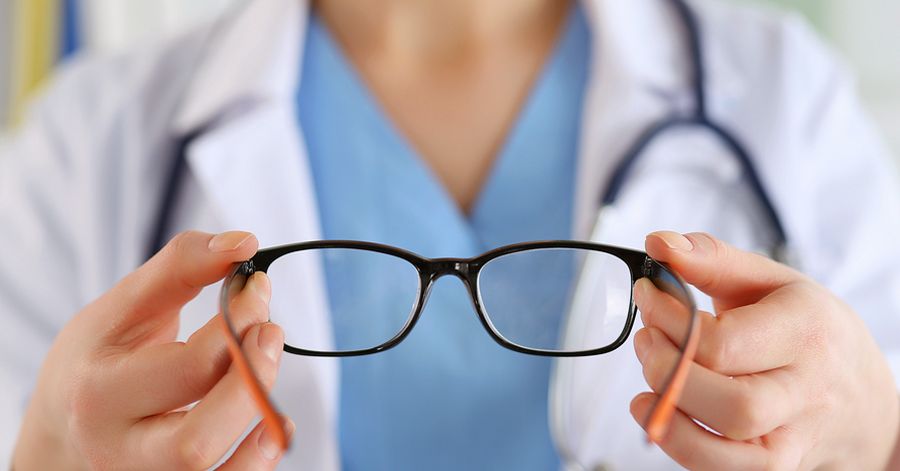TYPES OF OPHTHALMIC LENS MATERIALS
Different types of materials are available for making ophthalmic lenses.
Glass
This has been the most commonly used lens material. It is colorless, transparent, resistant to heat and scratch with good optical qualities. It
is available as Crown glass (refractive index 1.523) and Flint (ref. index 1.650).
Glasses of higher refractive indices are thinner and lighter than glasses of lower refractive indices, so more suitable material for high power lenses. Photochromatic lenses darken on exposure to light and become colorless in dark again.
This is because silver chloride crystals are incorporated in the glass material, which on exposure to sunlight become darker in color. Glasses are also available in different tints, which is a permanent feature.
Chemical treatment, lamination or heat treatment makes the lens impact resistant. Chemical treatment is the best method as it gives optically good quality glasses.
Plastic Lenses or Resin Lenses
These lenses are popularly known as fiber lenses or plastic lenses. They are transparent, break resistant, impact resistant, lightweight with good optical qualities but prone to scratches and more costly than glass lenses.
Most commonly used material is CR-39(C stands for Columbia and R stands for resin). This material can withstand heat up to 100° C. Its refractive index is 1.498. Chemically it is Allyl Diglycol Carbonate.
Tints can be easily applied and changed if required later on. It is UV absorbing lens so protects against ultraviolet radiations. Resin lenses of higher refractive index are also available suitable for high power lenses.
One can easily appriciate that if you come out of air conditioned envionment, there occurs fogging of spectacle lenses. This fogging of
lenses in response to change in environment is less in resin lenses as compared to glass lenses.
These lenses can be made scratch resistant by a special type of coating over the lens. They are also thicker than glass lenses so the edge of concave lenses becomes prominent.
Polycarbonate Lenses
This material is heat sensitive hence can crack in hot or cold environment, but highly impact resistant, thinnest and lightweight but prone to scratches. A special scratch resistant coating is required.
Vision around edges is distorted. Its refractive index is 1.586 thus thinner than resin lenses. It blocks both UV A and UV B rays. Tinting of these lenses is difficult. Due to their impact resistance these lenses are suitable for stuntmen and sportspersons, persons involved in hazardous industries, children and single-eyed patients
OPTOMETRY-SHARP VISION
Optometrist
Tags:
OPHTHALMIC LENSESE

